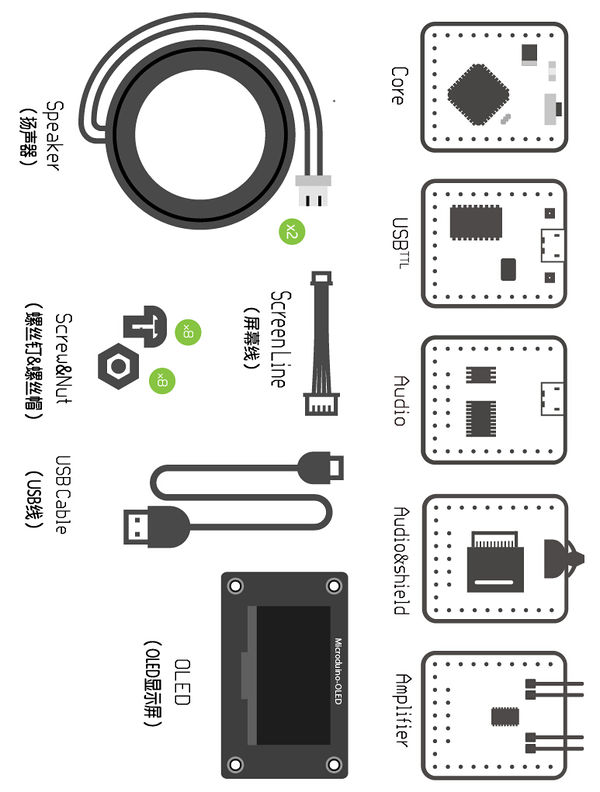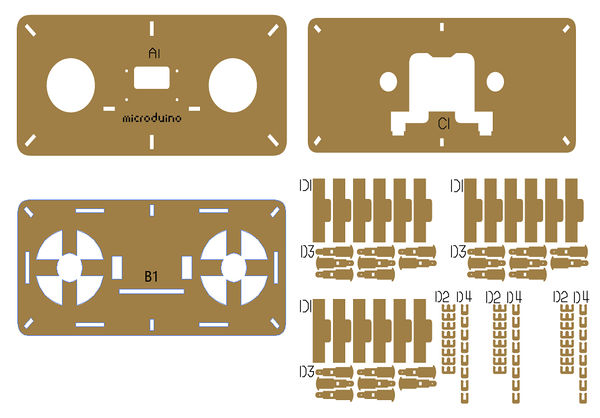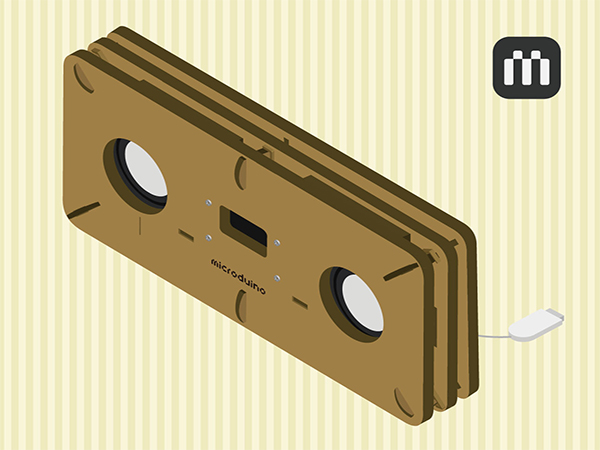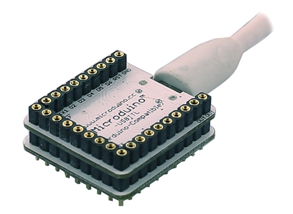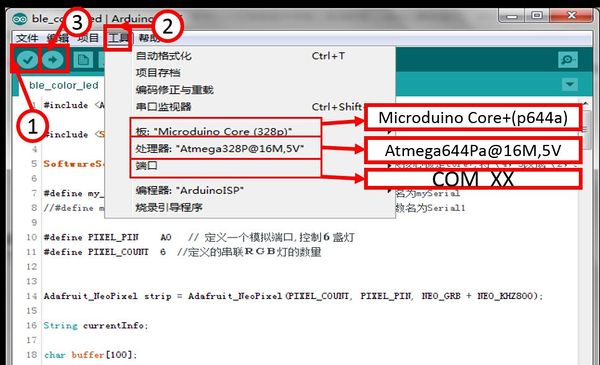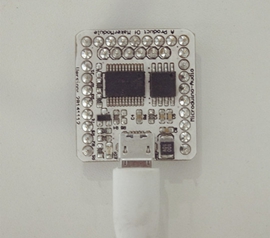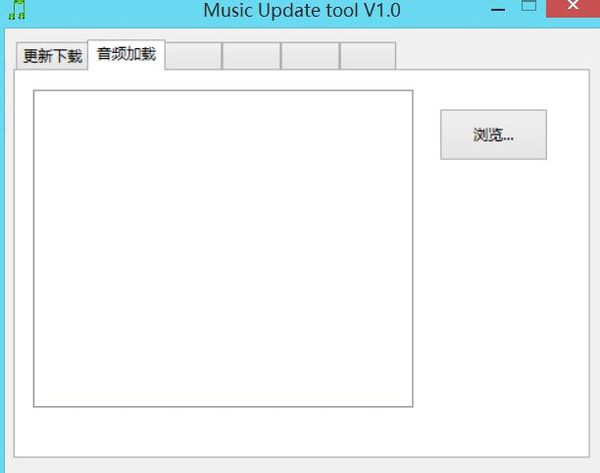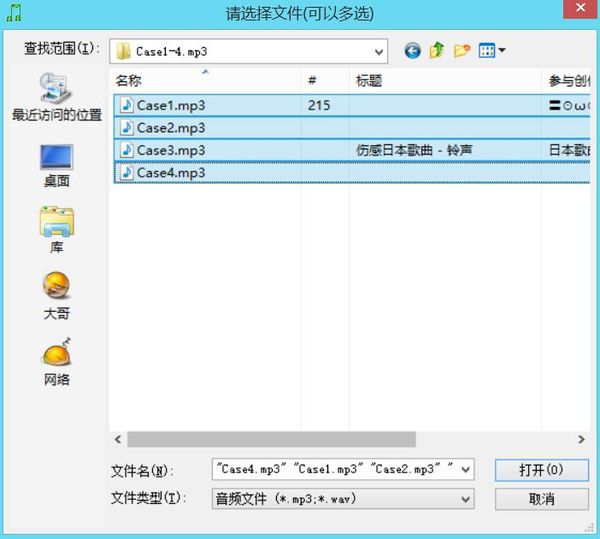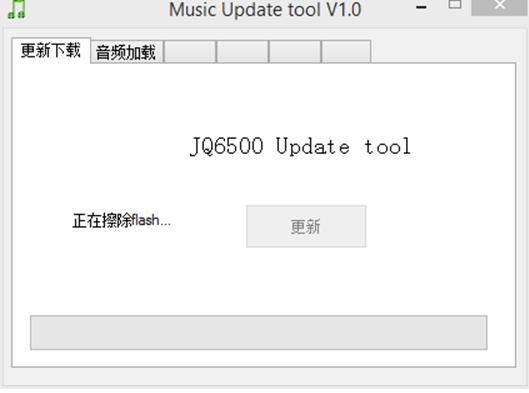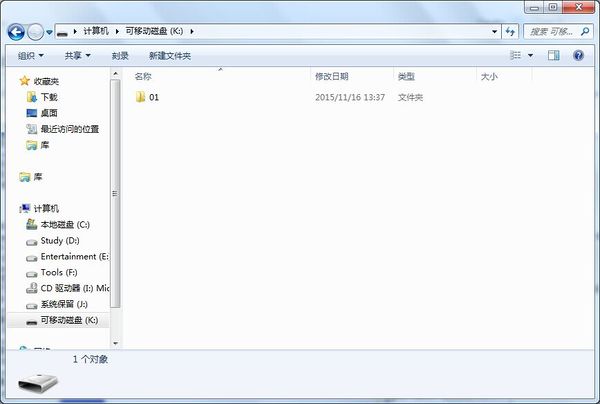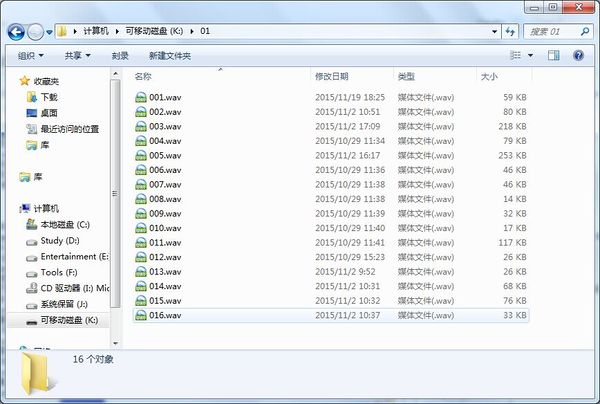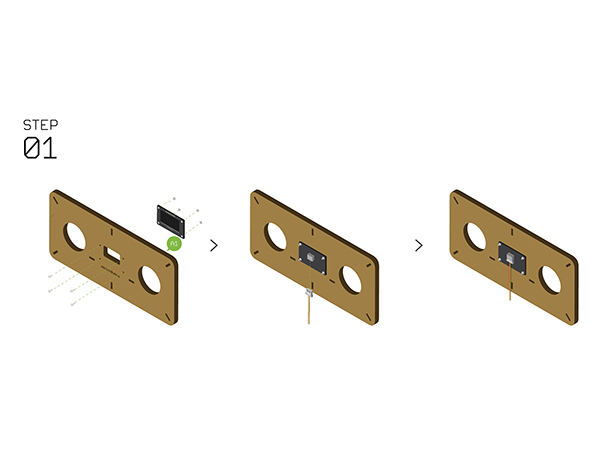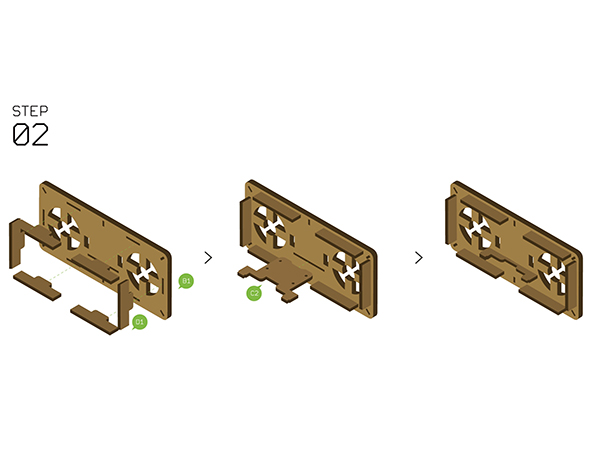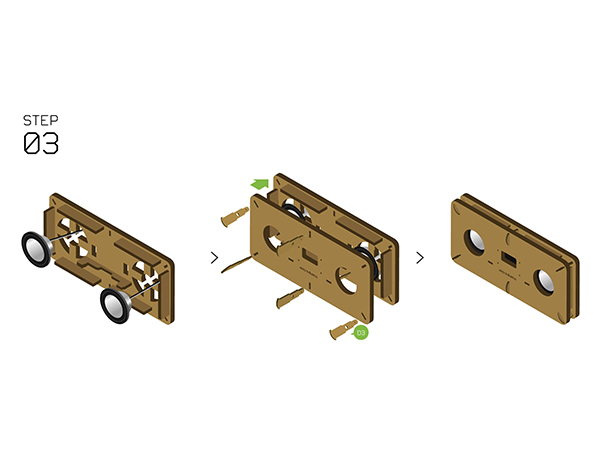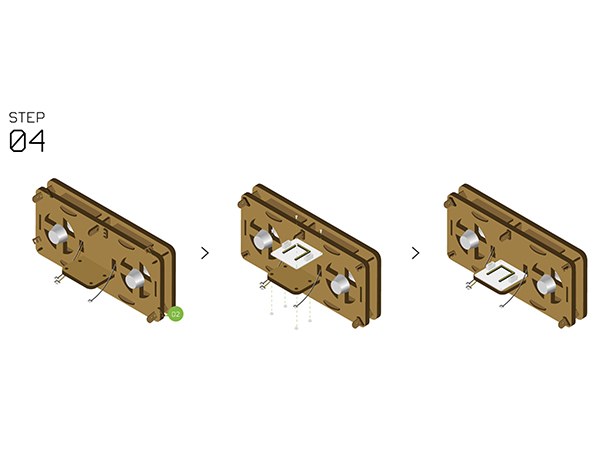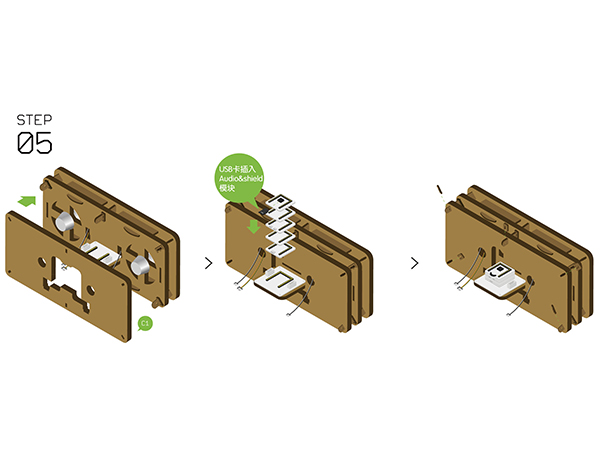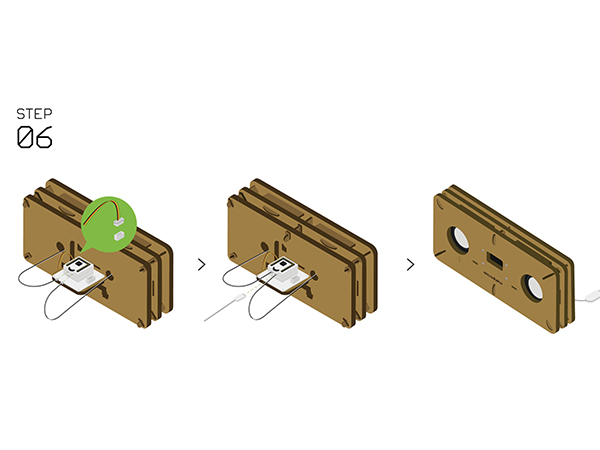“刷卡音箱/zh”的版本间的差异
502748957@qq.com(讨论 | 贡献) (Created page with "{| style="width: 800px;" |- | ==概述== *项目名称:Microduino刷卡音箱 *目的:读取SD卡中的歌曲播放,通过刷卡改变曲目 *难度:中 *耗时:2小...") |
502748957@qq.com(讨论 | 贡献) (→组装) |
||
| 第105行: | 第105行: | ||
[[File:Musicstep6.jpg||600px|center]] | [[File:Musicstep6.jpg||600px|center]] | ||
至此音乐盒拼装完成 | 至此音乐盒拼装完成 | ||
| + | ==刷卡使用== | ||
==注意事项== | ==注意事项== | ||
2015年11月30日 (一) 05:55的版本
概述
刷卡音箱一般是指在市场上支持或者能够读取SD、TF等等这些内存处理器的音箱的基础上,增加了刷卡换曲目功能的音箱,与传统的电脑音箱,手机音箱相比,插卡音箱独有的解码功能,使得它更为消费者所青睐,正因如此,它才被成为音响帝国中的解码大王。插卡音箱以实用,方便,最大限度的满足音箱消费者的需求为设计理念,产品设计简洁,使用高品质喇叭,音质震撼,还原度高,即使在最大音量下破音依然不明显,是追求完美音质的明智选择,还原效果明显,失真度低,被誉为音响王国中的音乐天使。精简按键设计、屏幕显示,无须复杂操作,轻松使用。 材料清单
实验原理Microduino-Audio板可解码并存储音乐文件,Microduino-Audio&shield 与喇叭连接实现音乐拨轮及大容量存储,Microduino-Cube-S1与Microduino-OLED连接可以直观的文字提示方式在OLED中显示音量及曲目。再将Microduino-USBTTL,Microduino-Core+与其他模块无序拼接即可实现插卡音箱功能。音箱外形采用木质外壳也可DIY自己的专属外壳。
文档调试过程将Microduino-Core+/zh、Microduino-USBTTL/zh堆叠在一起.用数据线将写好的程序通过Microduino-USBTTL/zh上传到Microduino-Core+/zh上。 注意:最好不要将所有模块堆叠在一起之后再上传程序 打开Arduino IDE编程软件,点击 【文件】->【打开】,打开插卡音箱文件夹后选择Microduino_Audio_ble\ Microduino_Audio_ble.ino 点击"√",编译程序。 点击【工具】,选择正确的板+处理器+端口。 点击"→",进行上传。
连接Audio模块到电脑。若成功识别,则“我的电脑”中会出现CD驱动,打开CD驱动。 注意:若未成功识别请检查数据线与模块之间是否插牢。如检查插牢还不能识别就换个电脑USB接口试试。 连接成功能显示出一个名为Microduino-Audio的CD驱动器,然后执行以下步骤: 打开驱动后选择MusicDownload.exe 打开后选择“音频加载” 点击“浏览”后选择所有歌曲,点击“打开”(歌曲在Case1-4.mp3中)。 注意:Flash中音乐文件不能超过4M,因此显屏中只有Music Num:1-4号有歌曲,5-9号歌曲还是上一首歌。如果想要增加歌曲,则使用第一种方法即音乐存入MicroSD卡 打开后点击返回“更新下载”,点击“更新”,点击更新,更新时间较长,请耐心等待 当现显示“校验成功”后,拷贝音乐就成功了。 注意:校验成功后直接关闭窗口,不要再点击更新,否则又要重新更新
将Audio&Shield模块通过USB数据线连接到电脑,此时会识别出一个CD驱动一个可移动磁盘。双击可移动磁盘 点击鼠标右键新建文件夹,命名为01(如需要多个可继续命名为02,03以此类推) 之后将音乐存储进文件夹01中即可 组装如图,请点击查看大图并对应步骤进行拼装
至此音乐盒拼装完成 刷卡使用注意事项1. 如果发生:只能增加音量不能减少音量,只能增加歌曲号不能减少歌曲号,或反之。 原因:uiStep()中阈值设定不合理。
在uiSetup中更改阈值设定 程序说明CardPlayer.ino #include "audio.h"
#include "JQ6500.h"
#include "JQ6500_def.h"
#include <SoftwareSerial.h>
#include <EEPROM.h>
//定义蓝牙通信串口
SoftwareSerial mySerial(2, 3); // RX, TX
#define VOICE mySerial
JQ6500 AUDIO(&VOICE); //声明audio类
#define PIN_key A0 //灰度传感器输入引脚
#include <Adafruit_NeoPixel.h>
#define PIN 6 //Lantern灯引脚
Adafruit_NeoPixel strip = Adafruit_NeoPixel(1, PIN, NEO_GRB + NEO_KHZ800);
#define music_num_MIN 1 //歌曲最小数,固定
#define music_num_MAX 10 //歌曲最大数,可改
int music_vol=26; //初始音量0~30
//---------------------------------
boolean music_status = false; //歌曲播放状态
int music_num = 1; //歌曲序号
void setup()
{
Serial.begin(9600);
strip.begin(); //初始化LED
strip.show(); // Initialize all pixels to 'off'
colorWipe(strip.Color(0, 255, 200), 10); //初始化颜色 R,G,B
AUDIO.init(DEVICE_TF,MODE_FOL,music_vol); //初始化mp3模块
AUDIO.pause(); //暂停播放
}
unsigned long time1,time2;
#define paper_val_MIN 100 //黑白传感器触发小值
#define paper_val_MAX 600 //黑白传感器触发大值
boolean paper_sta=false;
int paper_num=0; //纸张格数
int LED_vol_sta=0; //LED呼吸灯反转
int LED_vol=0; //LED呼吸灯值
boolean key=HIGH; //按键
boolean key_cache=LOW; //检测按键松开缓存
boolean vokey(boolean _vokey)
{
key=analogRead(PIN_key)<paper_val_MIN; //触发时
switch(_vokey)
{
case 0:
if(!key && key_cache) //按下松开后
{
key_cache=key; //缓存作判断用
return true;
}
else
{
key_cache=key; //缓存作判断用
return false;
}
break;
case 1:
if(key && !key_cache) //按下松开后
{
key_cache=key; //缓存作判断用
return true;
}
else
{
key_cache=key; //缓存作判断用
return false;
}
break;
}
}
void loop()
{
if(vokey(0)) //触发时
{
colorWipe(strip.Color(255, 255, 0), 10);
paper_num++; //计数
// Serial.print("+");
paper_sta=true; //读取模式
time1=millis();
}
if(millis()-time1>1000 && paper_num!=0) //触发,并且闲置超过一秒,结束扫描
{
AUDIO.choose(paper_num); //播放扫描歌曲
Serial.println(paper_num);
AUDIO.play();
//Serial.println("");
//Serial.print("num:");
//Serial.print(paper_num);
paper_num=0; //归零 等待下次扫描
paper_sta=false; //读取模式结束
}
if(!paper_sta) //非读取模式,LED呼吸
{
if(LED_vol>=255)
{
LED_vol_sta=1;
}
if(LED_vol<=0)
{
LED_vol_sta=0;
}
if(!LED_vol_sta)
{
LED_vol+=4;
}
else
{
LED_vol-=4;
}
colorWipe(strip.Color(LED_vol, 0, 0), 10); //呼吸灯显示亮度
}
delay(10);
}
// Fill the dots one after the other with a color
void colorWipe(uint32_t c, uint8_t wait) {
for(uint16_t i=0; i<strip.numPixels(); i++) {
strip.setPixelColor(i, c);
strip.show();
delay(wait);
}
}
Audio.h #include "arduino.h"
#include <EEPROM.h>
#define EEPROM_write(address, p) {int i = 0; byte *pp = (byte*)&(p);for(; i < sizeof(p); i++) EEPROM.write(address+i, pp[i]);}
#define EEPROM_read(address, p) {int i = 0; byte *pp = (byte*)&(p);for(; i < sizeof(p); i++) pp[i]=EEPROM.read(address+i);}
struct config_type
{
int EEPROM_music_mode;
int EEPROM_music_vol;
};
config_type config; // 定义结构变量config,并定义config的内容
void eeprom_WRITE(int mode, int vol)
{
config_type config; // 定义结构变量config,并定义config的内容
config.EEPROM_music_mode=mode;
config.EEPROM_music_vol=vol;
EEPROM_write(0, config); // 变量config存储到EEPROM,地址0写入
}
config_type eeprom_READ()
{
config_type config_readback;
EEPROM_read(0, config_readback);
return config_readback;
}
JQ6500.cpp //
// JQ6500 audio library for Arduino
//
#include "JQ6500.h"
#include "JQ6500_def.h"
#include <SoftwareSerial.h>
JQ6500::JQ6500(SoftwareSerial *ser) {
common_init();
audioSwSerial = ser;
}
JQ6500::JQ6500(HardwareSerial *ser) {
common_init();
audioHwSerial = ser;
}
void JQ6500::common_init(void){
audioSwSerial = NULL;
audioHwSerial = NULL;
}
void JQ6500::begin(uint16_t baud){
if(audioSwSerial) audioSwSerial->begin(baud);
else audioHwSerial->begin(baud);
delay(10);
}
void JQ6500::sendCommand(uint8_t cmd, uint8_t *buf, uint16_t len){
sendBuffer[0] = STX;
sendBuffer[1] = len+2;
sendBuffer[2] = cmd;
if(len > 0)
memcpy(sendBuffer+3, buf, len);
sendBuffer[len+3] = ETX;
if(audioSwSerial)
audioSwSerial->write(sendBuffer, 4+len);
else
audioHwSerial->write(sendBuffer, 4+len);
delay(100);
}
void JQ6500::next(){
sendCommand(CMD_NEXT, NULL, 0);
}
void JQ6500::prev(){
sendCommand(CMD_PREV, NULL, 0);
}
void JQ6500::choose(uint16_t num){
cmdBuffer[0] = num>>8;
cmdBuffer[1] = num&0x00FF;
sendCommand(CMD_CHOOSE, cmdBuffer, 2);
}
void JQ6500::volUp(){
sendCommand(CMD_UP, NULL, 0);
}
void JQ6500::volDown(){
sendCommand(CMD_DOWN, NULL, 0);
}
void JQ6500::volumn(uint8_t vol){
cmdBuffer[0] = vol;
sendCommand(CMD_VOL, cmdBuffer, 1);
}
void JQ6500::eq(uint8_t eq){
cmdBuffer[0] = eq;
sendCommand(CMD_EQ, cmdBuffer, 1);
}
void JQ6500::setDevice(uint8_t device){
cmdBuffer[0] = device;
sendCommand(CMD_DEVICE, cmdBuffer, 1);
}
void JQ6500::sleep(){
sendCommand(CMD_SLEEP, NULL, 0);
}
void JQ6500::reset(){
sendCommand(CMD_RESET, NULL, 0);
}
void JQ6500::play(){
sendCommand(CMD_PLAY, NULL, 0);
}
void JQ6500::pause(){
sendCommand(CMD_PAUSE, NULL, 0);
}
void JQ6500::folder(uint8_t temp){
cmdBuffer[0] = temp;
sendCommand(CMD_FOLDER, cmdBuffer, 1);
}
void JQ6500::setMode(uint8_t temp){
cmdBuffer[0] = temp;
sendCommand(CMD_MODE, cmdBuffer, 1);
}
void JQ6500::chooseFile(uint8_t folder, uint8_t file){
cmdBuffer[0] = folder;
cmdBuffer[1] = file;
sendCommand(CMD_FILE, cmdBuffer, 2);
}
void JQ6500::init(uint8_t device, uint8_t mode, uint8_t vol){
begin(9600);
delay(300);
reset();
setDevice(device);
setMode(mode);
volumn(vol);
}
uint16_t JQ6500::dataParse(){
uint16_t sum = 0;
uint8_t temp;
if(audioSwSerial){
while(audioSwSerial->available()){
temp = char(audioSwSerial->read());
if(temp>47&&temp<58){
temp -=48;
}else if(temp>96&&temp<103){
temp -=87;
}
sum = sum*16+temp;
}
}else{
while(audioHwSerial->available()){
temp = char(audioHwSerial->read());
if(temp>47&&temp<58){
temp -=48;
}else if(temp>96&&temp<103){
temp -=87;
}
sum = sum*16+temp;
}
}
return sum;
}
uint16_t JQ6500::queryNum(uint8_t cmd){
if(audioSwSerial)
audioSwSerial->flush();
else
audioHwSerial->flush();
sendCommand(cmd, NULL, 0);
delay(100);
return dataParse();
}
uint16_t JQ6500::queryTF(){
return queryNum(QUERY_TF);
}
uint16_t JQ6500::queryTFFile(){
return queryNum(QUERY_TF_FILE);
}
uint16_t JQ6500::queryFlash(){
return queryNum(QUERY_FLASH);
}
uint16_t JQ6500::queryFlashFile(){
return queryNum(QUERY_FLASH_FILE);
}
uint16_t JQ6500::queryTotalTime(){
return queryNum(QUERY_TTIME);
}
uint16_t JQ6500::queryPlayTime(){
return queryNum(QUERY_PTIME);
}
String JQ6500::queryName(){
String nameCache = "";
char temp;
uint16_t i = 0;
if(audioSwSerial)
audioSwSerial->flush();
else
audioHwSerial->flush();
sendCommand(QUERY_NAME, NULL, 0);
delay(100);
if(audioSwSerial){
while(audioSwSerial->available()){
temp = audioSwSerial->read();
nameCache += temp;
if(temp == 32){
i++;
}else{
i = 0;
}
if(i >= 3){
i = 0;
nameCache.replace(" ", ".");
}
}
}else{
while(audioHwSerial->available()){
temp = audioHwSerial->read();
nameCache += temp;
if(temp == 32){
i++;
}else{
i = 0;
}
if(i >= 3){
i = 0;
nameCache.replace(" ", ".");
}
}
}
return nameCache;
}
//
// END OF FILE
//
JQ6500.h //
// JQ6500 audio library for Arduino
// VERSION: 0.1.0
//
#ifndef __JQ6500_H__
#define __JQ6500_H__
#include <Arduino.h>
#include <SoftwareSerial.h>
#define AUDIO_VERSION "0.1.0"
#define STX 0x7E
#define ETX 0xEF
#define CMD_NEXT 0x01
#define CMD_PREV 0x02
#define CMD_CHOOSE 0x03
#define CMD_UP 0x04
#define CMD_DOWN 0x05
#define CMD_VOL 0x06
#define CMD_EQ 0x07
#define CMD_DEVICE 0x09
#define CMD_SLEEP 0x0A
#define CMD_RESET 0x0C
#define CMD_PLAY 0x0D
#define CMD_PAUSE 0x0E
#define CMD_FOLDER 0x0F
#define CMD_MODE 0x11
#define CMD_FILE 0x12
#define QUERY_STA 0x42
#define QUERY_VOL 0x43
#define QUERY_EQ 0x44
#define QUERY_MODE 0x45
#define QUERY_VERSION 0x46
#define QUERY_TF 0x47
#define QUERY_DISK 0x48
#define QUERY_FLASH 0x49
#define QUERY_TF_FILE 0x4B
#define QUERY_DISK_FILE 0x4C
#define QUERY_FLASH_FILE 0x4D
#define QUERY_PTIME 0x50
#define QUERY_TTIME 0x51
#define QUERY_NAME 0x52
#define QUERY_FILES 0x53
class JQ6500{
public:
JQ6500(SoftwareSerial *ser);
JQ6500(HardwareSerial *ser);
void begin(uint16_t baud);
void next();
void prev();
void choose(uint16_t num);
void volUp();
void volDown();
void volumn(uint8_t vol);
void eq(uint8_t eq);
void setDevice(uint8_t device);
void sleep();
void reset();
void play();
void pause();
void folder(uint8_t temp);
void setMode(uint8_t temp);
void chooseFile(uint8_t folder, uint8_t file);
void init(uint8_t device, uint8_t mode, uint8_t vol);
uint16_t queryTF();
uint16_t queryTFFile();
uint16_t queryFlash();
uint16_t queryFlashFile();
uint16_t queryTotalTime();
uint16_t queryPlayTime();
String queryName();
private:
uint8_t sendBuffer[8];
uint8_t cmdBuffer[8];
SoftwareSerial *audioSwSerial;
HardwareSerial *audioHwSerial;
void common_init(void);
void sendCommand(uint8_t cmd, uint8_t *buf, uint16_t len);
uint16_t dataParse();
uint16_t queryNum(uint8_t cmd);
};
#endif
//
// END OF FILE
//
JQ6500_def //
// AM2321 Temperature & Humidity Sensor library for Arduino
// VERSION: 0.1.0
//
// The MIT License (MIT)
//
// Copyright (c) 2013 Wang Dong
//
// Permission is hereby granted, free of charge, to any person obtaining a copy
// of this software and associated documentation files (the "Software"), to deal
// in the Software without restriction, including without limitation the rights
// to use, copy, modify, merge, publish, distribute, sublicense, and/or sell
// copies of the Software, and to permit persons to whom the Software is
// furnished to do so, subject to the following conditions:
//
// The above copyright notice and this permission notice shall be included in
// all copies or substantial portions of the Software.
//
// THE SOFTWARE IS PROVIDED "AS IS", WITHOUT WARRANTY OF ANY KIND, EXPRESS OR
// IMPLIED, INCLUDING BUT NOT LIMITED TO THE WARRANTIES OF MERCHANTABILITY,
// FITNESS FOR A PARTICULAR PURPOSE AND NONINFRINGEMENT. IN NO EVENT SHALL THE
// AUTHORS OR COPYRIGHT HOLDERS BE LIABLE FOR ANY CLAIM, DAMAGES OR OTHER
// LIABILITY, WHETHER IN AN ACTION OF CONTRACT, TORT OR OTHERWISE, ARISING FROM,
// OUT OF OR IN CONNECTION WITH THE SOFTWARE OR THE USE OR OTHER DEALINGS IN
// THE SOFTWARE.
//
#ifndef __JQ6500_DEF_H__
#define __JQ6500_DEF_H__
#define EQ_NORMAL 0x00
#define EQ_POP 0x01
#define EQ_ROCK 0x02
#define EQ_JAZZ 0x03
#define EQ_CLASSIC 0x04
#define EQ_BASE 0x05
#define DEVICE_U 0x00
#define DEVICE_TF 0x01
#define DEVICE_AUX 0x02
#define DEVICE_SLEEP 0x03
#define DEVICE_FLASH 0x04
#define MODE_ALL 0x00
#define MODE_FOL 0x01
#define MODE_ONE 0x02
#define MODE_RAM 0x03
#define MODE_ONE_STOP 0x04
#endif
//
// END OF FILE
//
视频 |
